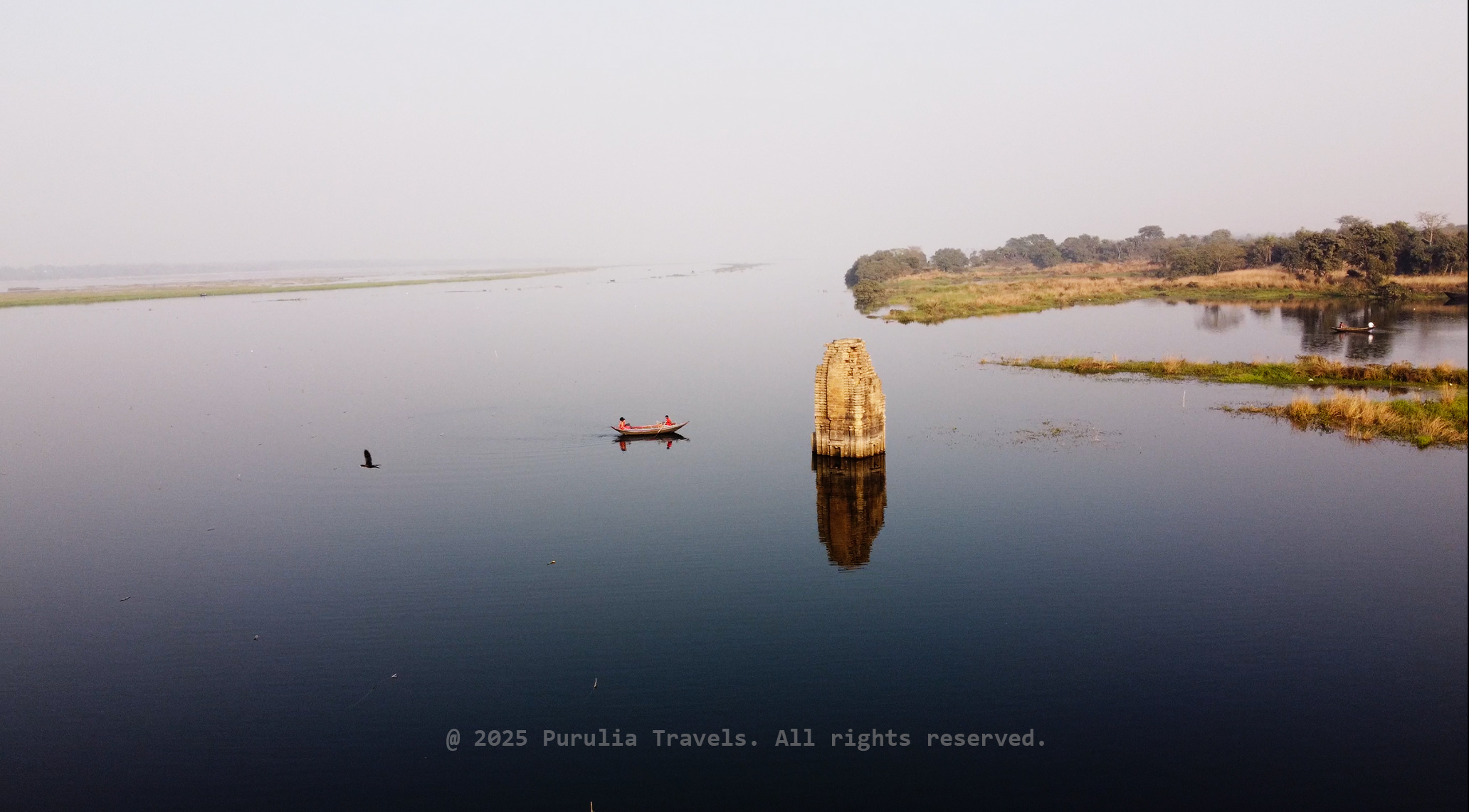
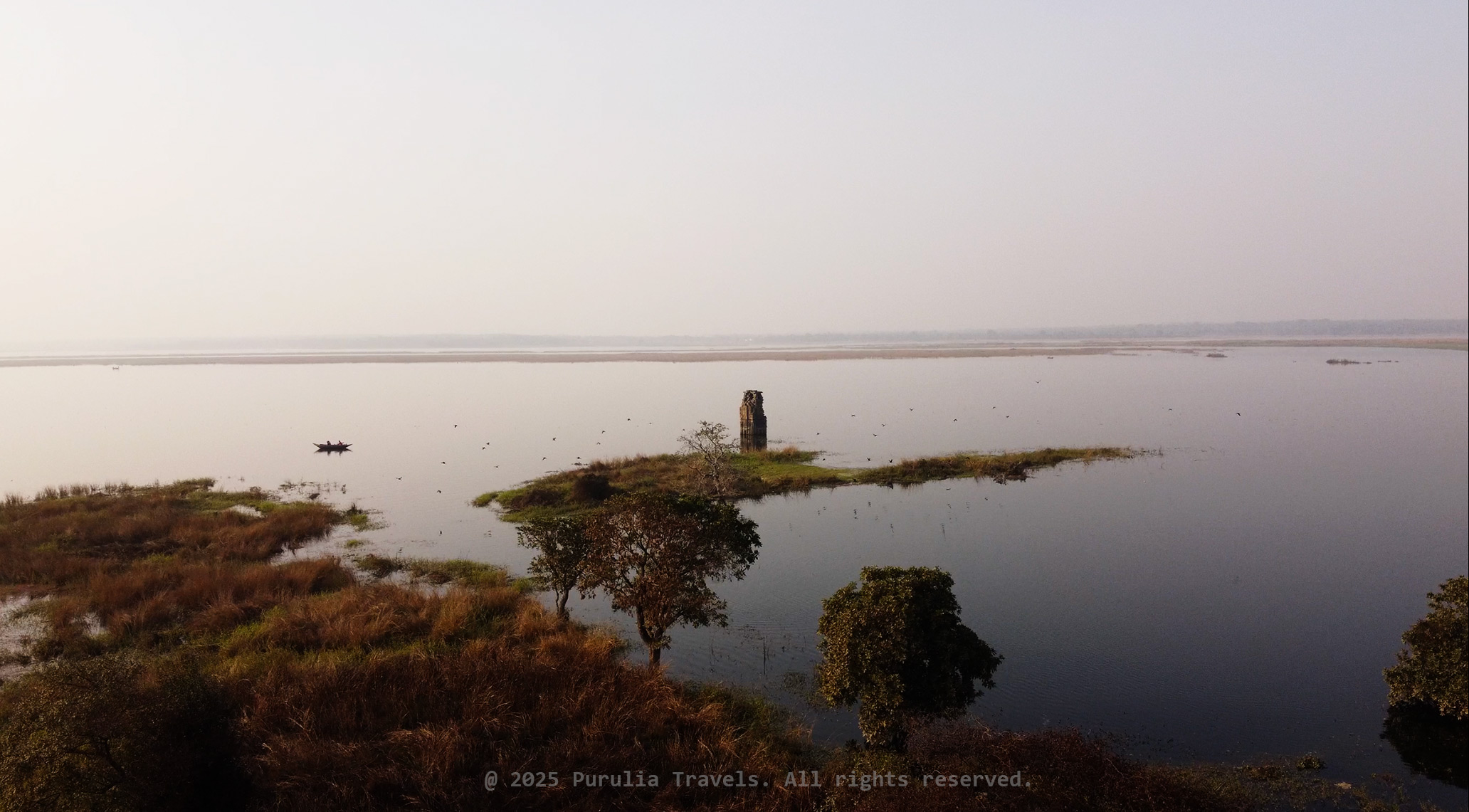
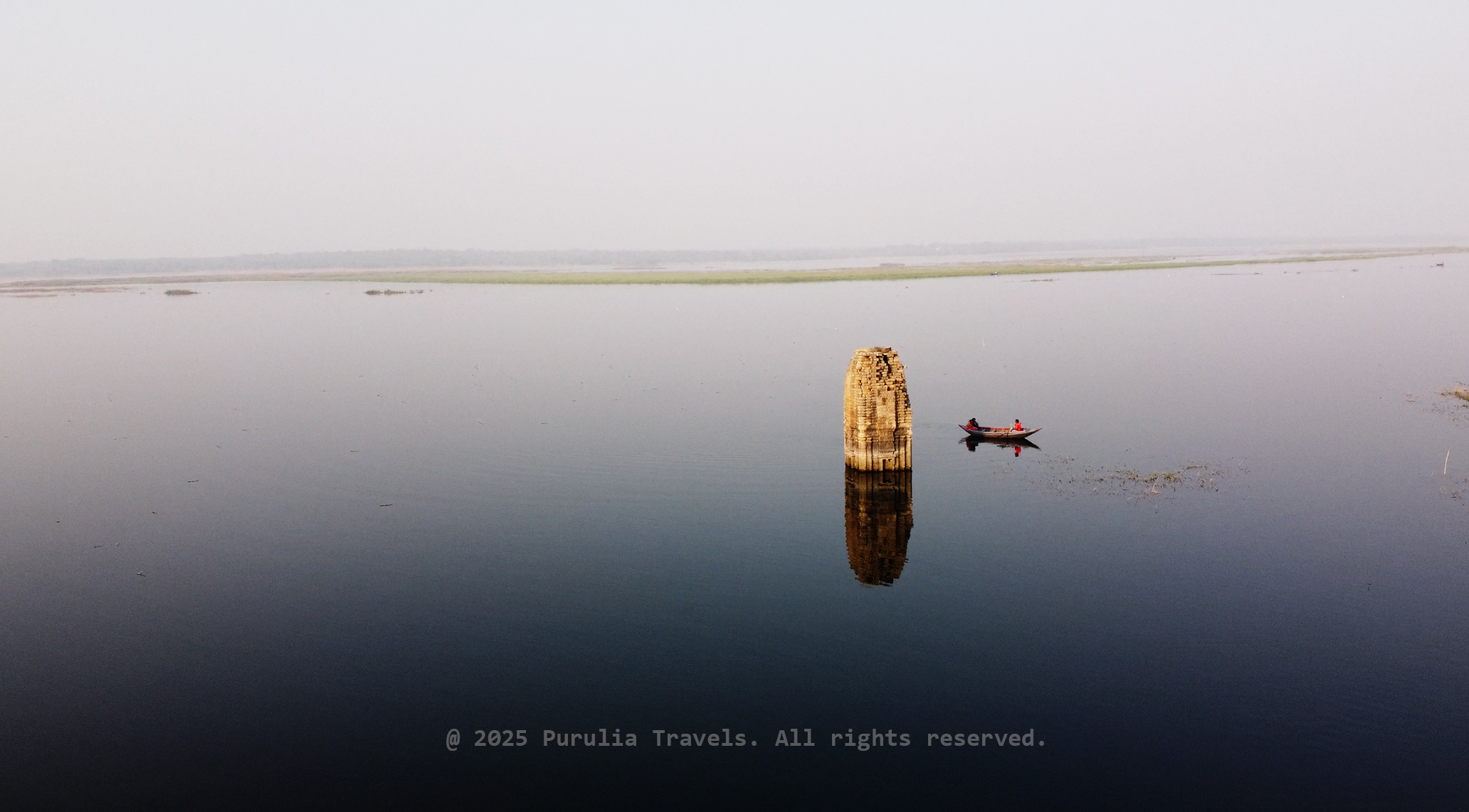
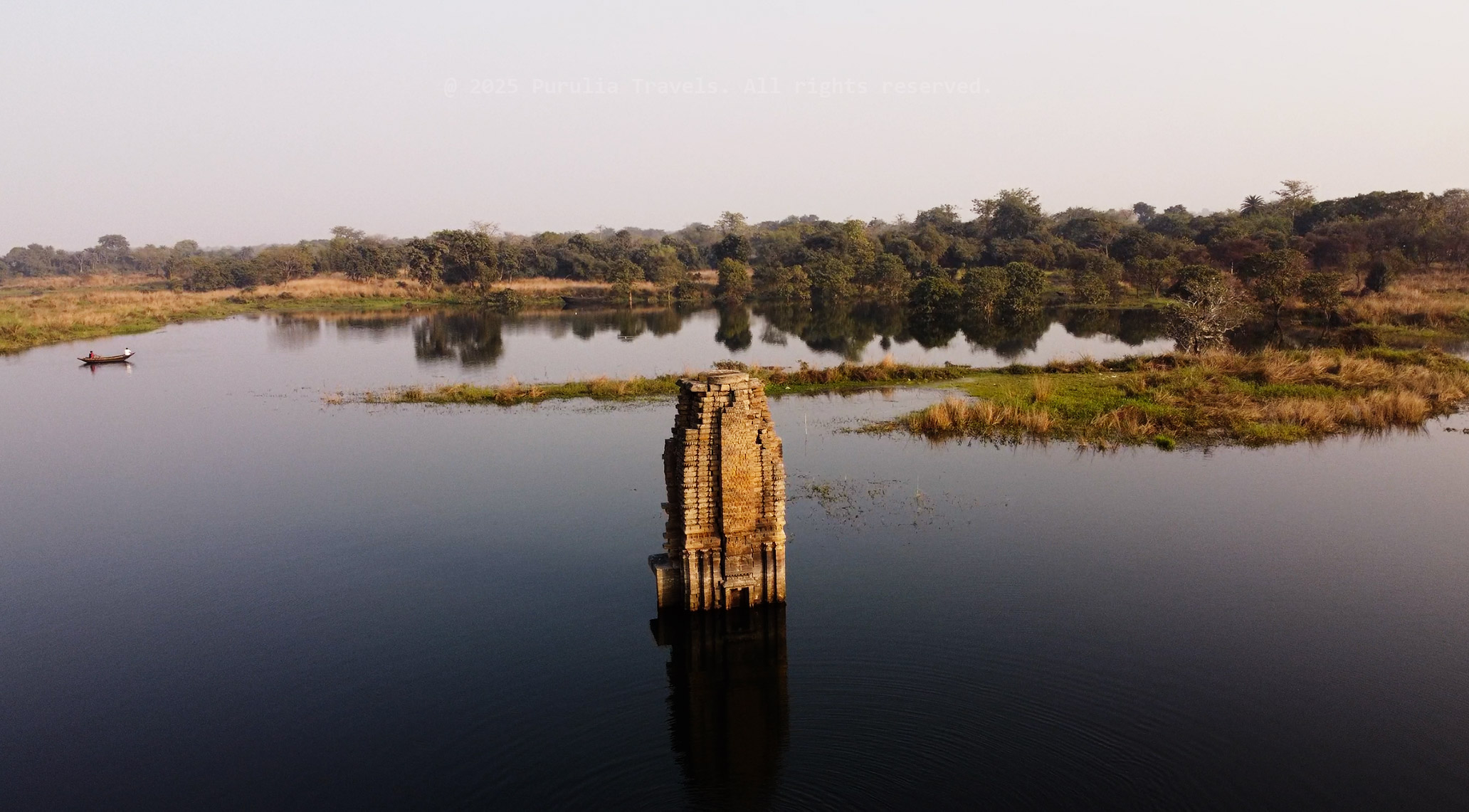
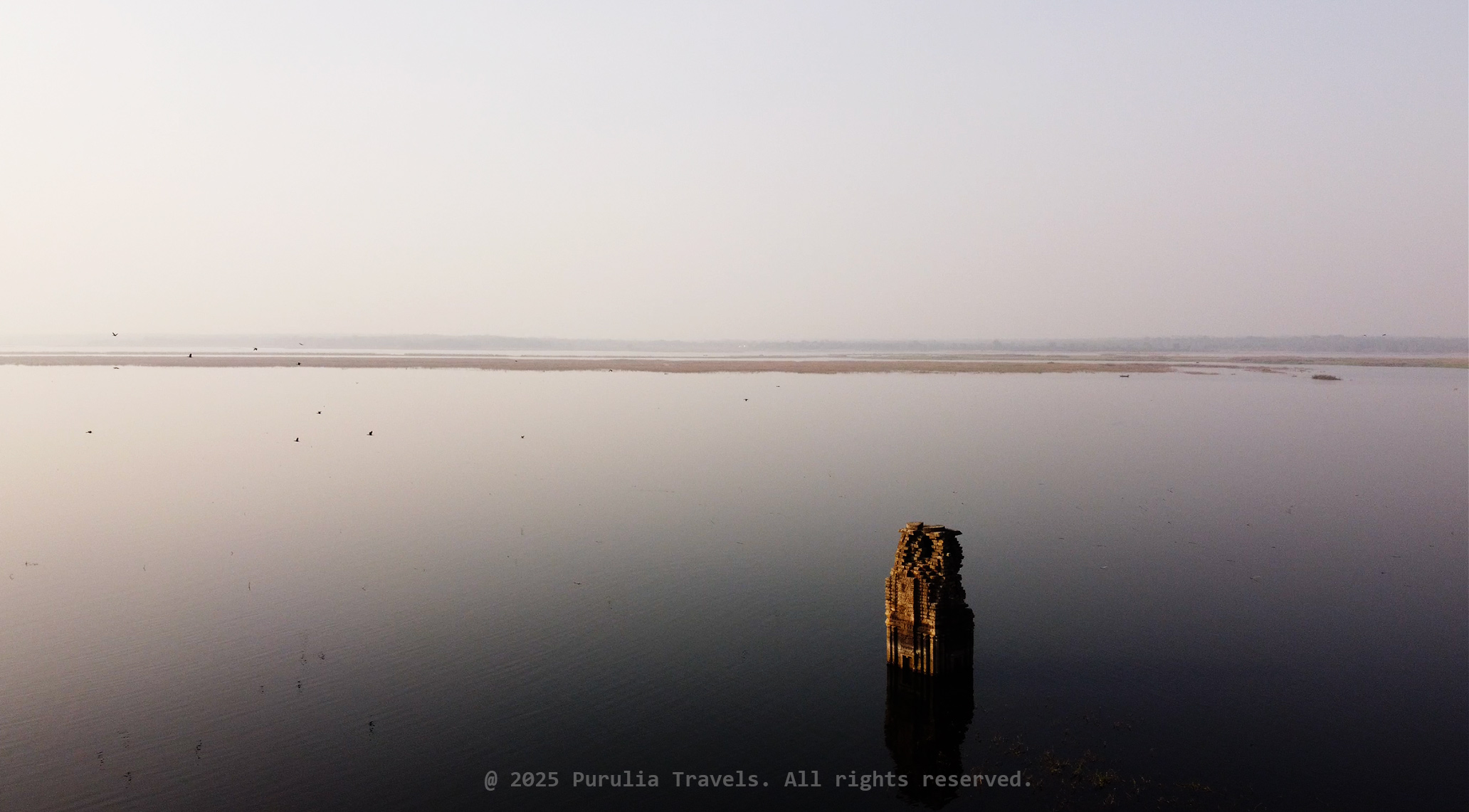
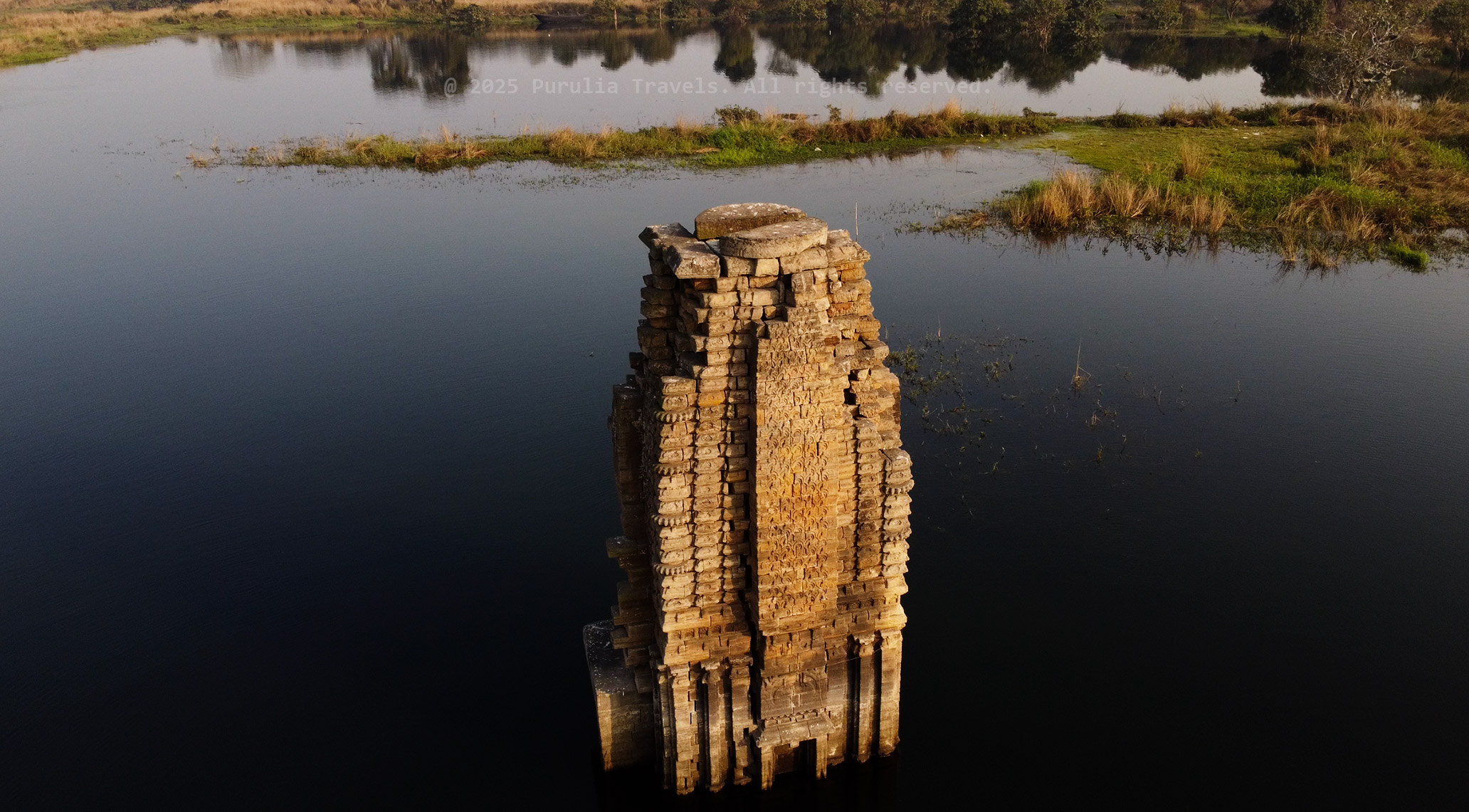
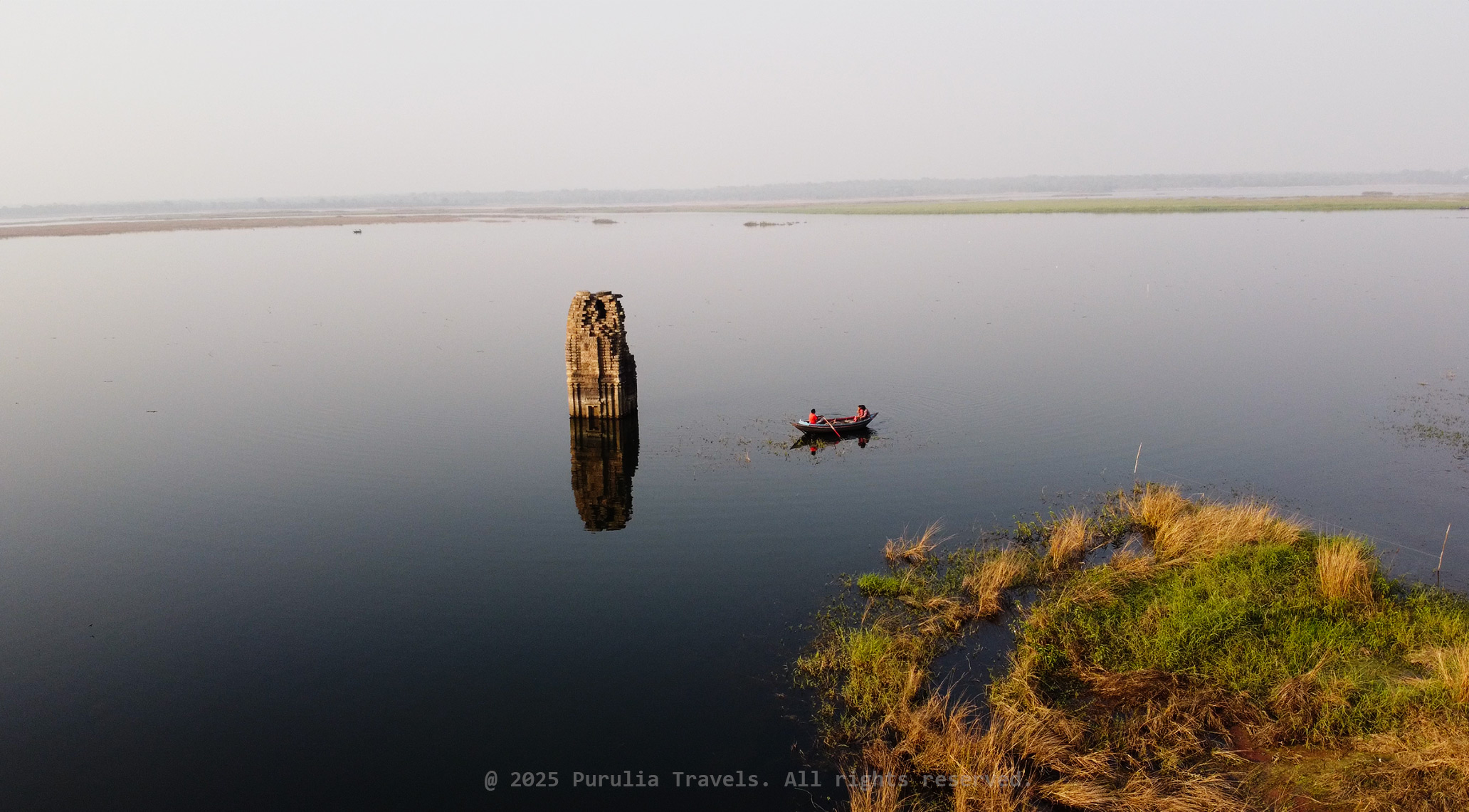
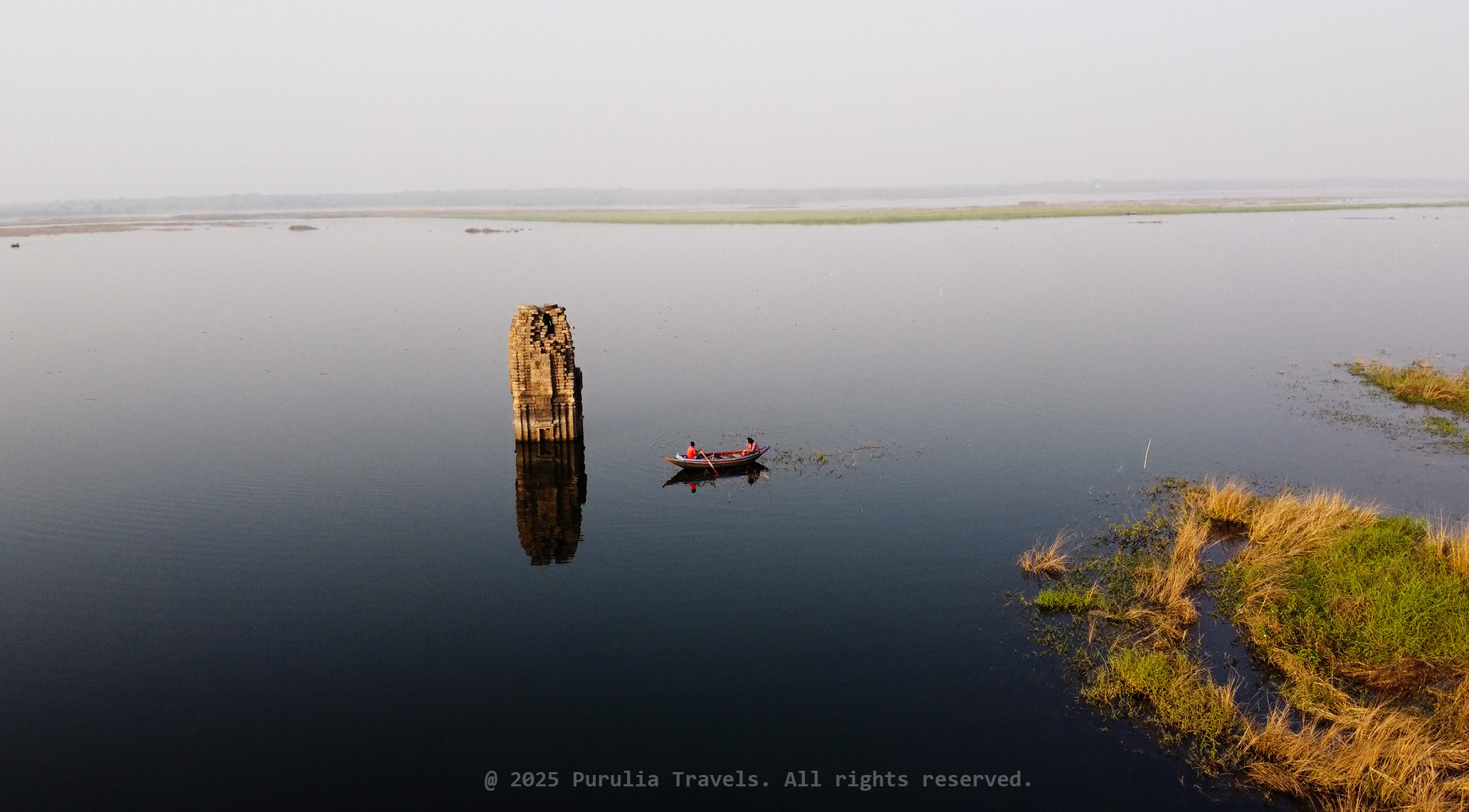
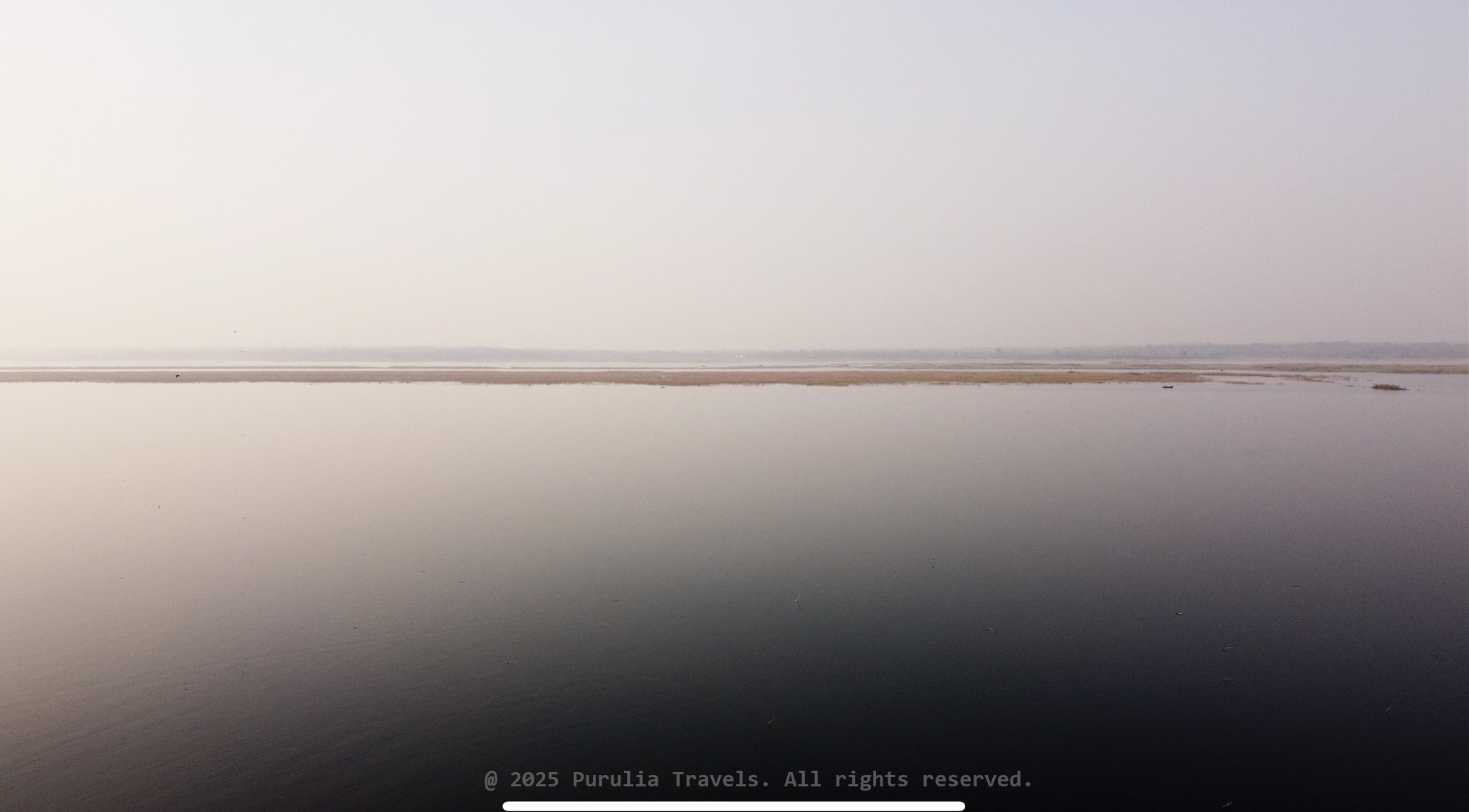
Telkupi, a hidden gem in the Purulia district of West Bengal, is a serene village with a rich historical legacy. Located under the Raghunathpur police station, Telkupi is known for its submerged temples, which rise from the waters, offering travelers a unique opportunity to explore the region’s past. Once a thriving center for the Kashipur kings, Telkupi has transformed into a peaceful spot, with the ruins of its temples standing as silent witnesses to its glorious history. This village, with its captivating blend of natural beauty and cultural heritage, is quickly becoming one of Purulia’s most intriguing destinations for those seeking both tranquility and history.
Once known as "Tailakampi", the present-day village of Telkupi, nestled along the banks of the Damodar River, was once the flourishing capital of the Shikhara dynasty. This region, which remained a part of the Manbhum district of Bihar until the reorganization of states in 1956, holds immense historical and cultural significance, especially during the reign of King Rudrasikhara in the 11th century.
At its peak, Telkupi served as the political and cultural nucleus of the Shikhara dynasty. The illustrious King Rudra (Rudrasikhara) not only ruled over this region but also played a key role in shaping Bengal’s history. He is remembered for his alliance with Pala King Ramapala, helping to suppress the Varendra rebellion, a pivotal event in the political landscape of early medieval Bengal. These accounts are immortalized in the Sanskrit epic poem “Ramcharitam” written by Sandhyakar Nandi, which narrates the tales of King Rudrasikhara’s valor and governance.
The village was once adorned with numerous temples, believed to have been built by the Rajas of Panchet and Kashipur, who were descendants of the Shikhara Kings. These temples, dating back to roughly the 11th century, reflected the grandeur of medieval eastern Indian architecture, blending intricate carvings and temple designs rooted in regional spiritual traditions.
However, in the 1950s, the construction of the Panchet Dam brought irreversible change. Much of Telkupi and its temple complex were submerged under the reservoir, leaving behind a hauntingly beautiful legacy. Today, a few temples still peek out above the water, especially during the dry season, offering a surreal sight and a window into a lost kingdom. These submerged ruins, surrounded by tranquil waters, continue to intrigue visitors, historians, and devotees alike.
Telkupi stands today not just as a village, but as a living monument to a once-mighty dynasty, its submerged temples silently narrating the forgotten tales of royalty, resilience, and reverence.
Local legends add a magical touch to Telkupi’s story. People say that during the aarti (ritual) at Jagannath in Puri, you can hear the bells and conches from the submerged Temple of Telkupi. This tale has given the village a sacred status, and many still come to pay their respects, drawn by its spiritual aura.
Telkupi is a unique and peaceful destination known for its submerged temples, which reflect the area’s rich history. When the Damodar Valley Corporation built a dam on the Damodar River in the 1950s, many temples in the village were submerged. As water levels change throughout the year, some temples remain underwater while a few partially emerge.
The main attraction is a partially submerged temple that creates a mystical view, especially when seen from a boat. The boat ride starts at Telkupi Ghat, guided by local boatmen through calm waters. As you approach the temple, the sight of it rising from the water is truly mesmerizing.
This peaceful journey, combined with scenic views and historical charm, makes Telkupi a must-visit for anyone looking for a quiet, offbeat getaway with a touch of adventure and heritage.
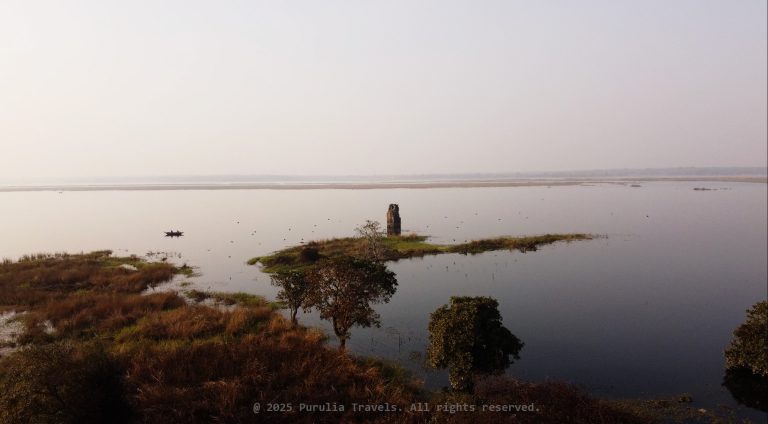

| Location | Attractions | Distance from Telkupi | Read More |
|---|---|---|---|
| Baranti Lake | Baranti known for its scenic lake and vibrant Palash blooms during spring | 37 km | Read More |
| Joychandi Pahar | Hilltop shrine of Chandi Mata, rock climbing, and panoramic views | 22 km | Read More |
| Garh Panchakot | Ruins of fort, ancient temples, forested hills | 30 km | Read More |
| Banda Deul | 11th-century stone temple and heritage archaeological site | 11 km | Read More |

One of the best times to visit Telkupi is Spring, especially around Chaitra Month (March–April), the water in the Damodar River goes down, and the old temples come out from under the water. You can see their beautiful designs clearly, and enjoy boat rides to get a closer look. The road to Telkupi is also beautiful at this time, with bright red Palash flowers blooming along the way. In summer (May–June), it can get hot and the water may rise a bit, but the place stays quiet and peaceful, perfect for a calm and relaxing trip.
Winter is also a great time to visit. The weather is cool and nice, and the temples are still above the water, so you can see them clearly. It’s easy to walk around and explore the area without getting too hot or tired. The river looks calm, and the whole place feels peaceful. It’s perfect for a quiet trip with friends or family, where you can enjoy nature and history together.


During the rainy season, the water level in the river goes up again and the temples go back under the water. You may not be able to visit them closely, but the whole area becomes green and fresh. The rain makes the trees and plants come alive, and the views are very pretty. It’s a good time for people who love nature and enjoy quiet, rainy weather. Just be careful while travelling, as the roads may be wet or muddy.
Purulia Railway Station is well-connected and located about 322 km from Kolkata. You can take popular trains like the Ranchi Vande Bharat Express (20898), Chakradharpur Express (18011), Purulia SF Express (12827), or Ranchi Intercity Express (18627). After reaching the station, you can hire a private vehicle from Purulia Travels. The vehicle will take the Purulia–Barakar Road for 54 km, then take a left turn at "Nutandih" and continue for another 10 km to reach Telkupi.
Telkupi can also be reached easily by road from Kolkata. You can take a bus from Esplanade, where multiple government and private buses are available—two of the government buses offer AC service. All buses drop you at the Purulia Bus Stand, from where you can hire a private vehicle from Purulia Travels. The vehicle will take the Purulia–Barakar Road for 54 km, then take a left turn at "Nutandih" and continue for another 10 km to reach Telkupi.
The nearest airport is Kazi Nazrul Islam Airport in Durgapur, located about 90 km away. Another nearby option is Birsa Munda Airport in Ranchi, around 180 km from Telkupi. From either airport, you can travel to Purulia Town by train or bus. After reaching Purulia, you can easily hire a private vehicle from Purulia Travels. The vehicle will take the Purulia–Barakar Road for 54 km, then take a left turn at "Nutandih" and continue for another 10 km to reach Telkupi.
Find quick answers to all your questions about visiting Bamni Falls.
Telkupi is famous for its submerged temples, remnants of an ancient capital of the Shikhara dynasty. The temples are visible during certain times of the year when the water level of the Damodar River recedes.
The best time to visit Telkupi is during the Chaitra month (March-April), when the water level of the Damodar River is low, and the temples are more visible, also the Polash flowers increase the beauty of the surroundings by making it red and orange.
Yes, Telkupi was the capital of the Shikhara dynasty and was referenced in the Sanskrit epic Ramacharitam. It was once an important center for the Kashipur kings, who built many temples in the area.
Due to flooding and lack of maintenance, only two temples remain relatively intact today, while others have been submerged or have decayed over time.
Subscribe to see secret deals prices drop the moment you sign up!
WhatsApp us

